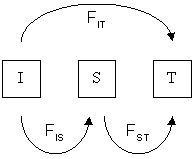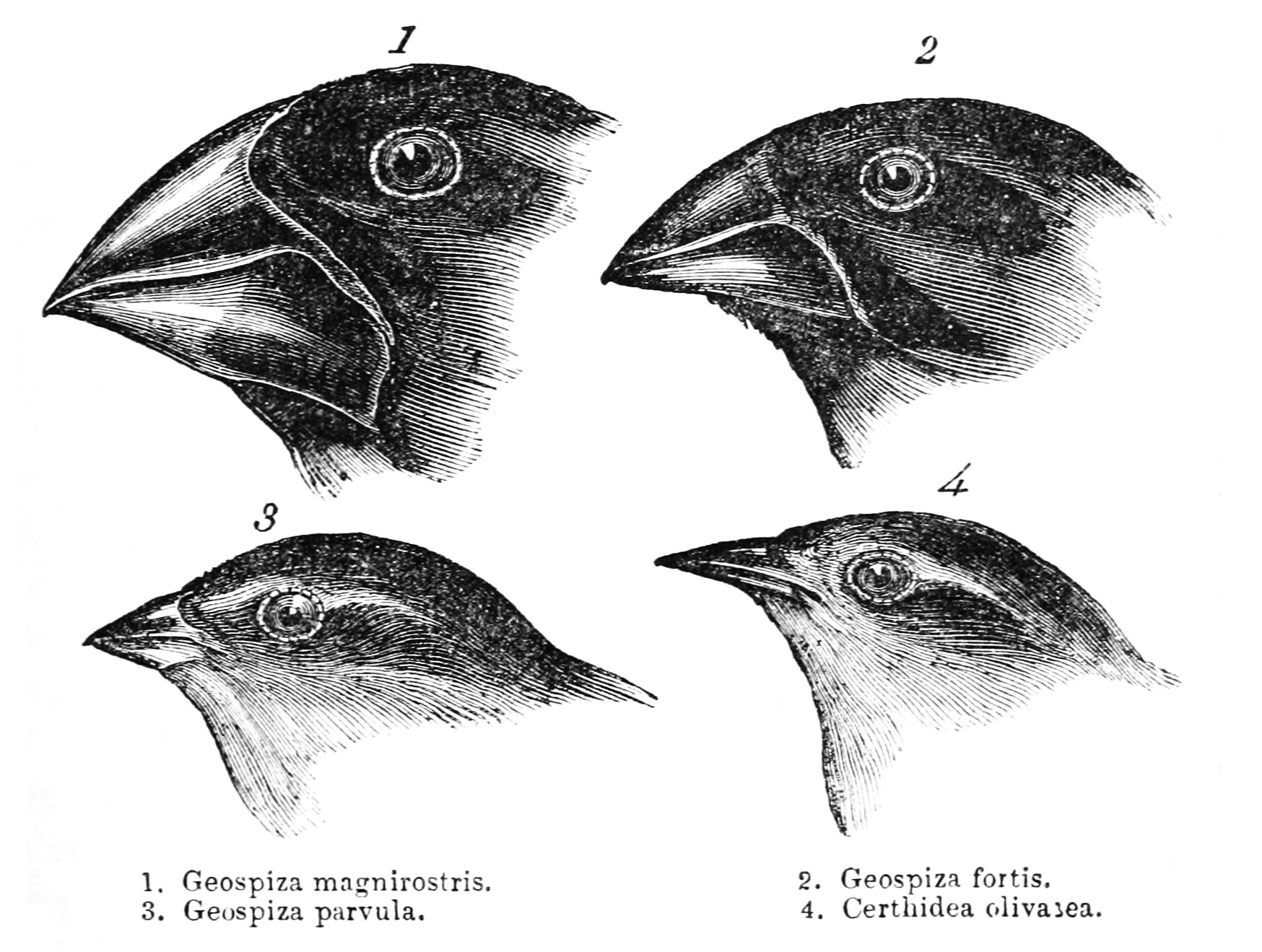|
Biostatistics
Biostatistics (also known as biometry) are the development and application of statistical methods to a wide range of topics in biology. It encompasses the design of biological experiments, the collection and analysis of data from those experiments and the interpretation of the results. History Biostatistics and genetics Biostatistical modeling forms an important part of numerous modern biological theories. Genetics studies, since its beginning, used statistical concepts to understand observed experimental results. Some genetics scientists even contributed with statistical advances with the development of methods and tools. Gregor Mendel started the genetics studies investigating genetics segregation patterns in families of peas and used statistics to explain the collected data. In the early 1900s, after the rediscovery of Mendel's Mendelian inheritance work, there were gaps in understanding between genetics and evolutionary Darwinism. Francis Galton tried to expand Mendel's ... [...More Info...] [...Related Items...] OR: [Wikipedia] [Google] [Baidu] |
Modern Synthesis (20th Century)
The modern synthesis was the early 20th-century synthesis of Charles Darwin's theory of evolution and Gregor Mendel's ideas on heredity into a joint mathematical framework. Julian Huxley coined the term in his 1942 book, '' Evolution: The Modern Synthesis''. The synthesis combined the ideas of natural selection, Mendelian genetics, and population genetics. It also related the broad-scale macroevolution seen by palaeontologists to the small-scale microevolution of local populations. The synthesis was defined differently by its founders, with Ernst Mayr in 1959, G. Ledyard Stebbins in 1966, and Theodosius Dobzhansky in 1974 offering differing basic postulates, though they all include natural selection, working on heritable variation supplied by mutation. Other major figures in the synthesis included E. B. Ford, Bernhard Rensch, Ivan Schmalhausen, and George Gaylord Simpson. An early event in the modern synthesis was R. A. Fisher's 1918 paper on mathematical population genetics, ... [...More Info...] [...Related Items...] OR: [Wikipedia] [Google] [Baidu] |
Mathematical Biology
Mathematical and theoretical biology, or biomathematics, is a branch of biology which employs theoretical analysis, mathematical models and abstractions of the living organisms to investigate the principles that govern the structure, development and behavior of the systems, as opposed to experimental biology which deals with the conduction of experiments to prove and validate the scientific theories. The field is sometimes called mathematical biology or biomathematics to stress the mathematical side, or theoretical biology to stress the biological side. Theoretical biology focuses more on the development of theoretical principles for biology while mathematical biology focuses on the use of mathematical tools to study biological systems, even though the two terms are sometimes interchanged. Mathematical biology aims at the mathematical representation and modeling of biological processes, using techniques and tools of applied mathematics. It can be useful in both theoretical and pr ... [...More Info...] [...Related Items...] OR: [Wikipedia] [Google] [Baidu] |
Statistical
Statistics (from German: '' Statistik'', "description of a state, a country") is the discipline that concerns the collection, organization, analysis, interpretation, and presentation of data. In applying statistics to a scientific, industrial, or social problem, it is conventional to begin with a statistical population or a statistical model to be studied. Populations can be diverse groups of people or objects such as "all people living in a country" or "every atom composing a crystal". Statistics deals with every aspect of data, including the planning of data collection in terms of the design of surveys and experiments.Dodge, Y. (2006) ''The Oxford Dictionary of Statistical Terms'', Oxford University Press. When census data cannot be collected, statisticians collect data by developing specific experiment designs and survey samples. Representative sampling assures that inferences and conclusions can reasonably extend from the sample to the population as a whole. An expe ... [...More Info...] [...Related Items...] OR: [Wikipedia] [Google] [Baidu] |
Ronald Fisher
Sir Ronald Aylmer Fisher (17 February 1890 – 29 July 1962) was a British polymath who was active as a mathematician, statistician, biologist, geneticist, and academic. For his work in statistics, he has been described as "a genius who almost single-handedly created the foundations for modern statistical science" and "the single most important figure in 20th century statistics". In genetics, his work used mathematics to combine Mendelian genetics and natural selection; this contributed to the revival of Darwinism in the early 20th-century revision of the theory of evolution known as the modern synthesis. For his contributions to biology, Fisher has been called "the greatest of Darwin’s successors". Fisher held strong views on race and eugenics, insisting on racial differences. Although he was clearly a eugenist and advocated for the legalization of voluntary sterilization of those with heritable mental disabilities, there is some debate as to whether Fisher support ... [...More Info...] [...Related Items...] OR: [Wikipedia] [Google] [Baidu] |
Gregor Mendel
Gregor Johann Mendel, OSA (; cs, Řehoř Jan Mendel; 20 July 1822 – 6 January 1884) was a biologist, meteorologist, mathematician, Augustinian friar and abbot of St. Thomas' Abbey in Brünn (''Brno''), Margraviate of Moravia. Mendel was born in a German-speaking family in the Silesian part of the Austrian Empire (today's Czech Republic) and gained posthumous recognition as the founder of the modern science of genetics. Though farmers had known for millennia that crossbreeding of animals and plants could favor certain desirable traits, Mendel's pea plant experiments conducted between 1856 and 1863 established many of the rules of heredity, now referred to as the laws of Mendelian inheritance. Mendel worked with seven characteristics of pea plants: plant height, pod shape and color, seed shape and color, and flower position and color. Taking seed color as an example, Mendel showed that when a true-breeding yellow pea and a true-breeding green pea were cross-bred their ... [...More Info...] [...Related Items...] OR: [Wikipedia] [Google] [Baidu] |
Francis Galton
Sir Francis Galton, FRS FRAI (; 16 February 1822 – 17 January 1911), was an English Victorian era polymath: a statistician, sociologist, psychologist, anthropologist, tropical explorer, geographer, inventor, meteorologist, proto- geneticist, psychometrician and a proponent of social Darwinism, eugenics, and scientific racism. He was knighted in 1909. Galton produced over 340 papers and books. He also created the statistical concept of correlation and widely promoted regression toward the mean. He was the first to apply statistical methods to the study of human differences and inheritance of intelligence, and introduced the use of questionnaires and Statistical survey, surveys for collecting data on human communities, which he needed for genealogical and biographical works and for his anthropometrics, anthropometric studies. He was a pioneer of eugenics, coining the term itself in 1883, and also coined the phrase "nature versus nurture". His book ''Hereditary ... [...More Info...] [...Related Items...] OR: [Wikipedia] [Google] [Baidu] |
Statistics
Statistics (from German: '' Statistik'', "description of a state, a country") is the discipline that concerns the collection, organization, analysis, interpretation, and presentation of data. In applying statistics to a scientific, industrial, or social problem, it is conventional to begin with a statistical population or a statistical model to be studied. Populations can be diverse groups of people or objects such as "all people living in a country" or "every atom composing a crystal". Statistics deals with every aspect of data, including the planning of data collection in terms of the design of surveys and experiments.Dodge, Y. (2006) ''The Oxford Dictionary of Statistical Terms'', Oxford University Press. When census data cannot be collected, statisticians collect data by developing specific experiment designs and survey samples. Representative sampling assures that inferences and conclusions can reasonably extend from the sample to the population as a whole. An ex ... [...More Info...] [...Related Items...] OR: [Wikipedia] [Google] [Baidu] |
Inbreeding Coefficient
The coefficient of inbreeding of an individual is the probability that two alleles at any locus in an individual are identical by descent from the common ancestor(s) of the two parents. The coefficient of inbreeding is: The probability that two alleles at a given locus are identical by descent. The coefficient of relationship The coefficient of relationship is a measure of the degree of consanguinity (or biological relationship) between two individuals. The term coefficient of relationship was defined by Sewall Wright in 1922, and was derived from his definition of ... is: The proportion of genes that are held in common by two individuals as a result of direct or collateral relationship. References Population genetics {{genetics-stub ... [...More Info...] [...Related Items...] OR: [Wikipedia] [Google] [Baidu] |
Sewall G
Sewall is a surname. Notable people with the surname include: * Arthur Sewall (1835–1900), Shipbuilder and American Democratic politician from Maine * Charles S. Sewall (1779–1848), American politician * Doug Sewall, American wheelchair curler * George P. Sewall (1811–1881), American lawyer and State Representative from Old Town, Maine * Gilbert T. Sewall (born 1946), American educator and author * Harold M. Sewall (1860–1924), American politician and diplomat * Harriet Winslow Sewall (1819–1889), American poet * Jonathan Sewall (1729–1796), last British attorney general of Massachusetts * Joseph Sewall (1921–2011), American businessman and politician from Maine * May Wright Sewall (1844–1920), American feminist, educator, and lecturer * Richard B. Sewall (1908–2003), American professor of English at Yale University * Samuel Sewall (1652–1730), American judge in Massachusetts * Samuel Sewall (congressman) (1757–1814), American lawyer and congressman * Samuel ... [...More Info...] [...Related Items...] OR: [Wikipedia] [Google] [Baidu] |
F-statistics
In population genetics, ''F''-statistics (also known as fixation indices) describe the statistically expected level of heterozygosity in a population; more specifically the expected degree of (usually) a reduction in heterozygosity when compared to Hardy–Weinberg expectation. ''F''-statistics can also be thought of as a measure of the correlation between genes drawn at different levels of a (hierarchically) subdivided population. This correlation is influenced by several evolutionary processes, such as genetic drift, founder effect, bottleneck, genetic hitchhiking, meiotic drive, mutation, gene flow, inbreeding, natural selection, or the Wahlund effect, but it was originally designed to measure the amount of allelic fixation owing to genetic drift. The concept of ''F''-statistics was developed during the 1920s by the American geneticist Sewall Wright, who was interested in inbreeding in cattle. However, because complete dominance causes the phenotypes of homozygote domi ... [...More Info...] [...Related Items...] OR: [Wikipedia] [Google] [Baidu] |
Evolutionary Biology
Evolutionary biology is the subfield of biology that studies the evolutionary processes (natural selection, common descent, speciation) that produced the diversity of life on Earth. It is also defined as the study of the history of life forms on Earth. Evolution is based on the theory that all species are related and they gradually change over time. In a population, the genetic variations affect the physical characteristics i.e. phenotypes of an organism. These changes in the phenotypes will be an advantage to some organisms, which will then be passed onto their offspring. Some examples of evolution in species over many generations are the Peppered Moth and Flightless birds. In the 1930s, the discipline of evolutionary biology emerged through what Julian Huxley called the modern synthesis of understanding, from previously unrelated fields of biological research, such as genetics and ecology, systematics, and paleontology. The importance of studying Evolutionary biology ... [...More Info...] [...Related Items...] OR: [Wikipedia] [Google] [Baidu] |
Primordial Soup
Primordial soup, also known as, primordial goo, primordial ooze, prebiotic soup and prebiotic broth, is the hypothetical set of conditions present on the Earth around 3.7 to 4.0 billion years ago. It is an aspect of the heterotrophic theory (also known as the Oparin–Haldane hypothesis) concerning the origin of life, first proposed by Alexander Oparin in 1924, and J. B. S. Haldane in 1929. As formulated by Oparin, in the primitive Earth's surface layers, carbon, hydrogen, water vapour, and ammonia reacted to form the first organic compounds. The concept of a primordial soup gained credence in 1953 when the " Miller–Urey experiment" used a highly reduced mixture of gases—methane, ammonia and hydrogen—to form basic organic monomers, such as amino acids. Historical background The notion that living beings originated from inanimate materials comes from the Ancient Greeks—the theory known as spontaneous generation. Aristotle in the 4th century BCE gave a proper explanation, ... [...More Info...] [...Related Items...] OR: [Wikipedia] [Google] [Baidu] |




